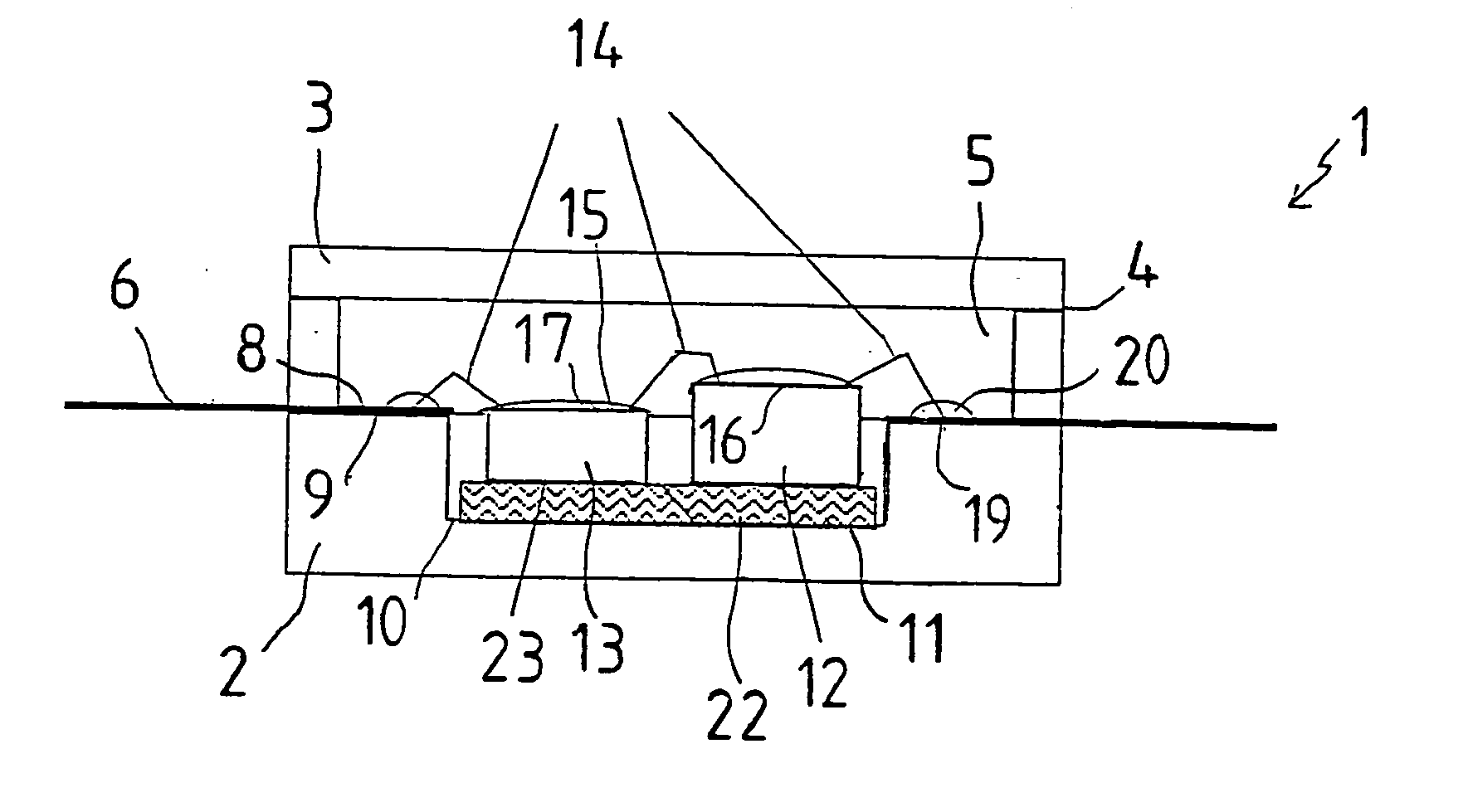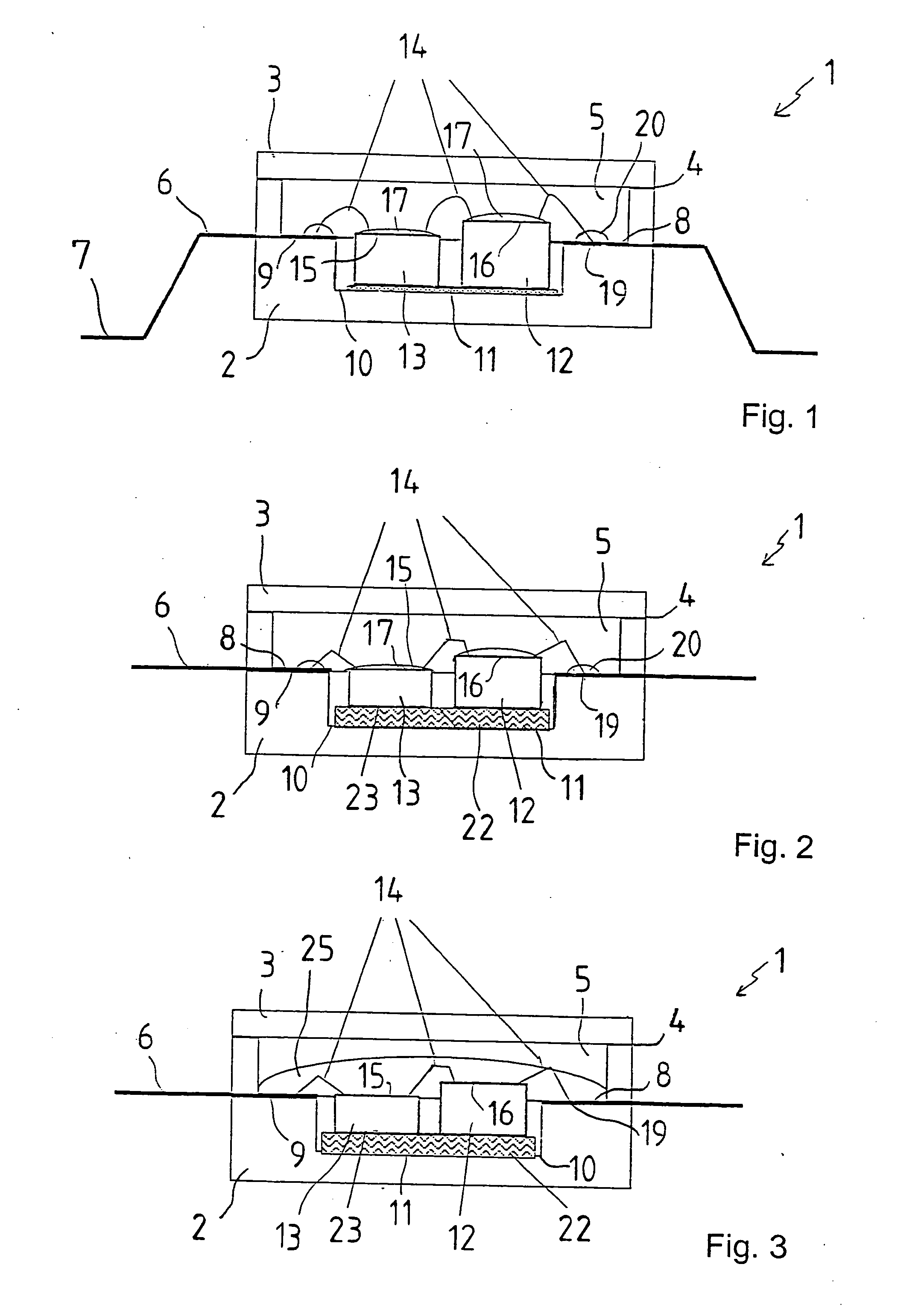Acceleration sensor system
a sensor system and acceleration technology, applied in the field of acceleration sensor systems, can solve the problems of difficult module combination, disadvantageous offset stability of output voltage and sensitivity, and large manufacturing tolerance of various samples, so as to achieve good measuring properties, low production expenditure, and low cost
- Summary
- Abstract
- Description
- Claims
- Application Information
AI Technical Summary
Benefits of technology
Problems solved by technology
Method used
Image
Examples
Embodiment Construction
[0017] A sensor system 1 has a premold housing 2, 3 having housing lower part 2 and cover 3, which are bonded to each other in a connecting region 4, for instance, by laser welding or by adhesion, and which surround a housing inner chamber 5.
[0018] According to FIG. 1, a lead frame 6 runs through housing lower part 2 and may be set onto a printed circuit board (that is not shown) using its terminal pins 7. In the housing inner chamber 5, middle regions 8 of lead frame 6 run on a stage 9 of housing lower part 2. On a floor area 10 below stage 9, an adhesion layer 11 has been applied onto which a sensor chip 12 and an evaluation ship 13, e.g. an ASIC (application-specified integrated circuit) are applied. Adhesive layer 11 is advantageously formed by a soft adhesive, which in particular is softer than the material of sensor chip 12, and has a specified layer thickness. In this case, adhesive layer 11 may have a uniform thickness greater than 50 μm, advantageously greater than 100 μm,...
PUM
 Login to View More
Login to View More Abstract
Description
Claims
Application Information
 Login to View More
Login to View More - R&D
- Intellectual Property
- Life Sciences
- Materials
- Tech Scout
- Unparalleled Data Quality
- Higher Quality Content
- 60% Fewer Hallucinations
Browse by: Latest US Patents, China's latest patents, Technical Efficacy Thesaurus, Application Domain, Technology Topic, Popular Technical Reports.
© 2025 PatSnap. All rights reserved.Legal|Privacy policy|Modern Slavery Act Transparency Statement|Sitemap|About US| Contact US: help@patsnap.com


